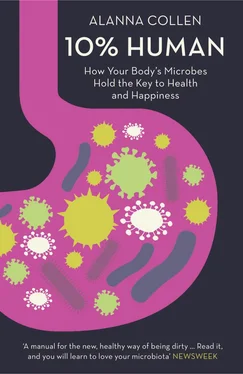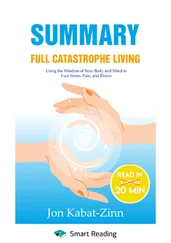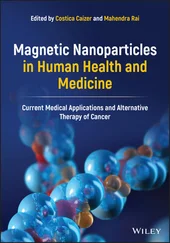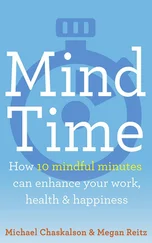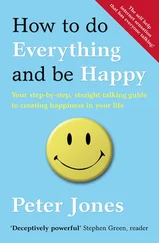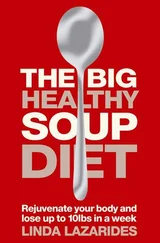I resolved to put my microbes first, altering my diet to better suit their needs. I planned to have a second sample sequenced after my lifestyle changes had had a chance to take effect, in the hope that my efforts might be evident from the change in the diversity and balance of the species I play host to. Most of all, I hoped that my investment in them would pay dividends, by unlocking the door to better health and happiness.
INTRODUCTION CONTENTS Cover Title Page 10% Human How Your Body’s Microbes Hold the Key to Health and Happiness ALANNA COLLEN Copyright Dedication Epigraph At the heart of science is an essential balance between two seemingly contradictory attitudes – an openness to new ideas, no matter how bizarre or counterintuitive they may be, and the most ruthless sceptical scrutiny of all ideas, old and new. This is how deep truths are winnowed from deep nonsense. CARL SAGAN Prologue: Being Cured Introduction: The Other 90% 1. Twenty-First-Century Sickness 2. All Diseases Begin in the Gut 3. Mind Control 4. The Selfish Microbe 5. Germ Warfare 6. You Are What They Eat 7. From the Very First Breath 8. Microbial Restoration Coda: Twenty-First-Century Health Epilogue: 100% Human Picture Section References List of Illustrations Index Acknowledgements About the Publisher
The Other 90% CONTENTS Cover Title Page 10% Human How Your Body’s Microbes Hold the Key to Health and Happiness ALANNA COLLEN Copyright Dedication Epigraph At the heart of science is an essential balance between two seemingly contradictory attitudes – an openness to new ideas, no matter how bizarre or counterintuitive they may be, and the most ruthless sceptical scrutiny of all ideas, old and new. This is how deep truths are winnowed from deep nonsense. CARL SAGAN Prologue: Being Cured Introduction: The Other 90% 1. Twenty-First-Century Sickness 2. All Diseases Begin in the Gut 3. Mind Control 4. The Selfish Microbe 5. Germ Warfare 6. You Are What They Eat 7. From the Very First Breath 8. Microbial Restoration Coda: Twenty-First-Century Health Epilogue: 100% Human Picture Section References List of Illustrations Index Acknowledgements About the Publisher
In May 2000, just weeks before the announcement of the first draft of the human genome, a notebook began circulating among the scientists sitting at the bar in Cold Spring Harbor Laboratory in New York State. Excitement was building about the next phase of the Human Genome Project, in which the DNA sequence would be split into its functional parts – genes. The notebook contained a sweepstake: the guesses of the best-informed group of people on the planet concerning one intriguing question: How many genes does it take to build a human?
Senior research scientist Lee Rowen, who was leading a group working on decoding chromosomes 14 and 15, sipped her beer as she pondered the question. Genes make proteins, the building blocks of life, and the sheer complexity of humans made it seem probable that the number would be high. Higher than the mouse, surely, which was known to have 23,000 genes. Probably also higher than the wheat plant, with 26,000 genes. And, no doubt, far higher than ‘The Worm’, a favourite laboratory species of developmental biologists, with its 20,500 genes.
Despite guesses averaging over 55,000 genes, and topping 150,000, Rowen’s understanding of the field meant she was inclined to go low. She placed a bet of 41,440 that year, and followed it up a year later with a second bet of just 25,947 genes. In 2003, with the true gene number only just emerging from the nearly finished sequence, Rowen was awarded the prize. Her entry was the lowest of all 165 bets, and the latest gene count had just dropped even lower than any scientist had ever predicted.
With just shy of 21,000 genes, the human genome is hardly bigger than that of The Worm ( C. elegans ). It is half the size of the rice plant, and even the humble water flea outstrips it, with 31,000 genes. None of these species can talk, create, or think intelligent thoughts. You might think, as the scientists entering the Genesweep pool did, that humans would have a great many more genes than grasses and worms and fleas. After all, genes make proteins, and proteins make bodies. Surely a body as complex and sophisticated as a human’s would need more proteins, and therefore more genes, than a worm’s?
But these 21,000 genes are not the only genes that run your body. We do not live alone. Each of us is a superorganism; a collective of species, living side-by-side and cooperatively running the body that sustains us all. Our own cells, though far larger in volume and weight, are outnumbered ten to one by the cells of the microbes that live in and on us. These 100 trillion microbes – known as the microbiota – are mostly bacteria: microscopic beings made of just a single cell each. Alongside the bacteria are other microbes – viruses, fungi and archaea. Viruses are so small and simple that they challenge our ideas of what even constitutes ‘life’. They depend entirely on the cells of other creatures to replicate themselves. The fungi that live on us are often yeasts; more complex than bacteria, but still small, single-celled organisms. The archaea are a group that appear to be similar to bacteria, but they are as different evolutionarily as bacteria are from plants or animals. Together, the microbes living on the human body contain 4.4 million genes – this is the microbiome: the collective genomes of the microbiota. These genes collaborate in running our bodies alongside our 21,000 human genes. By that count, you are just half a per cent human.

A simplified tree of life, showing the three domains and four kingdoms of Domain Eukarya.
We now know that the human genome generates its complexity not only in the number of genes it contains, but also through the many combinations of proteins these genes are able to make. We, and other animals, are able to extract more functions from our genomes than they appear to encode at first glance. But the genes of our microbes add even more complexity to the mix, providing services to the human body that are more quickly evolved and more easily provided by these simple organisms.
Until recently, studying these microbes relied on being able to culture them on Petri dishes filled with broths of blood, bone marrow, or sugars, suspended in jelly. It’s a difficult task: most of the species living in the human gut die on exposure to oxygen – they simply haven’t evolved to tolerate it. What’s more, growing microbes on these plates means guessing what nutrients, temperature and gases they might need to survive, and failing to figure this out means failing to learn more about a species. Culturing microbes is the equivalent of checking who’s turned up for class by running down a register – if you don’t call someone’s name, you won’t know if they are there. Today’s technology – the DNA sequencing made so fast and cheap by the efforts of those working on the Human Genome Project – is more like requesting ID at the door; even those that you weren’t expecting can be accounted for.
As the Human Genome Project came to a close, expectations were high. It was seen as the key to our humanity, God’s greatest work, and a sacred library holding the secrets of disease. When the first draft was completed in June 2000, under budget at $2.7 billion and several years early, the US President, Bill Clinton, declared:
Today, we are learning the language in which God created life. We are gaining ever more awe for the complexity, the beauty, the wonder of God’s most divine and sacred gift. With this profound new knowledge, humankind is on the verge of gaining immense new power to heal. Genome science will have a real impact on all our lives – and even more, on the lives of our children. It will revolutionise the diagnosis, prevention and treatment of most, if not all, human diseases.
Читать дальше
